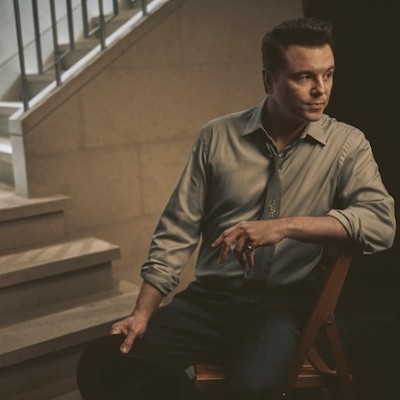Dec 9, 2025 12:28 PM
In Memoriam: Gordon Goodwin, 1954–2025
Gordon Goodwin, an award-winning saxophonist, pianist, bandleader, composer and arranger, died Dec. 8 in Los Angeles.…

Theo Croker is among the 25 artists DownBeat thinks will help shape jazz in the decades to come.
(Photo: Geordie Wood)Trumpeter Theo Croker is tired of being boxed in as a jazz musician. He expressed that sentiment while also acknowledging the importance of embracing the genre’s deep, multifaceted tradition. “I don’t like having everything I release compete with Frank Sinatra or Miles Davis on the sales charts. That’s not doing anybody any good. It’s a dead market,” Croker explained.Croker, the grandson of legendary trumpeter Doc Cheatham (1905–’97) and a former mentee of singer Dee Dee Bridgewater, exemplifies the jazz modernist who embraces multiple genres and cutting-edge technology. His 2019 album, Star People Nation (Sony Music Masterworks), deftly intertwined hip-hop, Afrobeat and future soul with late 20th-century jazz. But Croker doesn’t consider it to be an album that represents the next “New Thing.”
“We aren’t doing anything new; we are just being present,” Croker said before referencing Don Cherry’s albums from the ’70s, which incorporated music from across the world. “All of this ties into the larger conversation about race and our history as a country: how innovation—especially when it comes from people of color and other minorities—is just taken from us and not really respected.”
His thinking, like his music, quickly moves from idea to idea. Croker leaps unexpectedly from notions of race and art to commerce, topics that have surged to the forefront of public debate since the police-involved killing of George Floyd on May 25.
“Who’s getting paid every time a Dave Brubeck song is played?” Croker asked. “I understand that there is a jazz business that includes a giant catalog of acquired music and connected through a time period when a lot of Black jazz artists were taken advantage of. I think it’s dangerous to look back and think our music should be always be in the past. We need to understand where we came from in any art field or any genre. If you’re going to build the ship that’s going to Mars, you have to understand the ship that went to the moon.” DB
This story originally was published in the November 2020 issue of DownBeat. Subscribe here.

Goodwin was one of the most acclaimed, successful and influential jazz musicians of his generation.
Dec 9, 2025 12:28 PM
Gordon Goodwin, an award-winning saxophonist, pianist, bandleader, composer and arranger, died Dec. 8 in Los Angeles.…

Flea has returned to his first instrument — the trumpet — and assembled a dream band of jazz musicians to record a new album.
Dec 2, 2025 2:01 AM
After a nearly five-decade career as one of his generation’s defining rock bassists, Flea has returned to his first…

“It’s a pleasure and an honor to interpret the music of Oscar Peterson in his native city,” said Jim Doxas in regard to celebrating the Canadian legend. “He traveled the world, but never forgot Montreal.”
Nov 18, 2025 12:16 PM
In the pantheon of jazz luminaries, few shine as brightly, or swing as hard, as Oscar Peterson. A century ago, a…

Dec 11, 2025 11:00 AM
DownBeat presents a complete list of the 4-, 4½- and 5-star albums from 2025 in one convenient package. It’s a great…

Seth MacFarlane takes a turn from his television and film career to sing arrangements made for Frank Sinatra, but never recorded.
Nov 18, 2025 12:04 PM
“I’m not gonna lie to you — I don’t know why I thought this was about The Naked Gun, but I’m happy it’s…